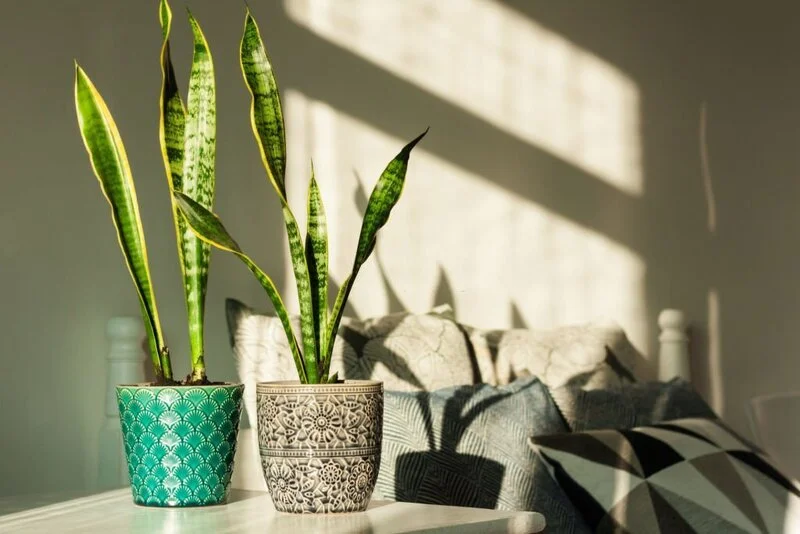The 9-Second Trick For Snake Plant Leaves Turning Yellow
Unknown Facts About Snake Plant Leaves Turning Yellow
Table of ContentsThe Of Snake Plant Leaves Turning YellowEverything about Snake Plant Leaves Turning YellowThe 7-Minute Rule for Snake Plant Leaves Turning YellowThe Facts About Snake Plant Leaves Turning Yellow RevealedSnake Plant Leaves Turning Yellow for DummiesAn Unbiased View of Snake Plant Leaves Turning Yellow
Most signs of root rot aren't noticeable to the outside of a plant, except for one sign yellowing fallen leaves (Snake Plant Leaves Turning Yellow). When a snake plant has yellow fallen leaves, this is usually a sign of overwatering resulting in root rot. When yellow, the leaf is essentially dead because it's not obtaining any kind of nutrients from the decayed rootsThe best way to check if the plant needs watering is to stick your finger one inch into the soil. If the dirt is wet, you don't need to water it. If the soil is bone dry, it's time to sprinkle the plant. Serpent plants in fact function best in dryer conditions than damp ones, so you ought to only sprinkle your serpent plant as soon as every 7-10 days.
Instead, the all-natural sunshine should be indirect. This implies that if your snake plant remains on a windowsill or surface area that is continuously in the sunshine, this is probably the source of the yellowing leaves. Yellow leaves mean that the plant is melting from the sunlight, which then eventually transforms brown and crispy.
The Definitive Guide for Snake Plant Leaves Turning Yellow
The sunlight will certainly then concentrate on certain components of the leaves, resulting in charred fallen leaves. Residence plants call for uniformity to thrive.
Any type of unexpected adjustments in these requirements, specifically the temperature, can result in the anxiety of a plant. That's right anxiety from radical adjustments in temperature level leads to yellow leaves. The primary reason to prevent putting your serpent plant through consistent temperature level changes is that it entirely affects the evaporation process.
Of course, in the beginning, you may need to move the plant to find its best atmosphere once it's discovered a home, leave it there. Just ensure the plant isn't near any home heating or air conditioning components like air conditioners or radiators. Bug infestations such as mealybugs and crawler mites aren't also common in serpent plants, yet they can still be the source of yellowing leaves.
The Ultimate Guide To Snake Plant Leaves Turning Yellow
When over-fertilized, the plant food will do a couple of points. It will either melt the leaves, causing them to transform yellow, or it will soak up as well much wetness from the dirt. This will protect against the plant from soaking up the wetness it needs to endure, which essentially causes a dehydrated plant.
If you think you may have over-fertilized your serpent plant, it's finest to leave the plant alone for a few weeks (Snake Plant Leaves Turning Yellow) to months
is rather necessary for our eco-friendly buddies. It provides plants their green color due to the fact that it shows green wavelengths of light. When we look at our precious snake plant and its lush, glossy leaves, we're seeing the magic of chlorophyll at job! When snake plant leaves begin to transform yellow, it's a sign they're doing not have chlorophyll.
The Best Guide To Snake Plant Leaves Turning Yellow
I have actually seen my share of obstacles with the sturdy Snake Plant, including the mystical yellowing of fallen leaves. Allow's study the various reasons behind this and exactly great post to read how to tackle them. Ironically, our good objectives can in some cases harm our Snake Plants. One common cause of yellow leaves is. Our very first offender is something that might surprise you.

Below's a handy overview for you: from the pot. For a much more thorough guide on repotting, examine out our short article on Snake Plants are tropical citizens, and they like their temperature stable and warm.
Snake Plant Leaves Turning Yellow Can Be Fun For Everyone

The service is straightforward: move your Serpent Plant to a pot with appropriate drainage openings. In my experience, the type of soil you make use of for your snake plant is critical.
Even the sun-loving serpent plant has its limits. Prolonged exposure to guide sunshine damages the cells of the fallen leaves, leading to. It's the plant's means of saying it's had a little bit also much sun! To minimize this, relocate your snake plant to a spot with. Your serpent plant will thank you for it.
The Main Principles Of Snake Plant Leaves Turning Yellow

Parasites and fungal infections can draw the sap from the leaves, depriving the serpent plant of nutrients and triggering the fallen leaves to turn yellow. The remedy? Apply to manage the parasites and fungal infections. Here's a fast guide to do it: neem oil from a gardening shop. the neem oil with water complying with the advised proportion on the bundle.
Serpent plant leaves are vulnerable to yellowing if the plant is not well site took care of. The yellowing typically indicates something is incorrect with the watering and other treatment practices. What creates the yellowing, and how do I fix it? Healthy and balanced serpent plants have a yellow tinting around the edges of their broad, upright leaf blades.